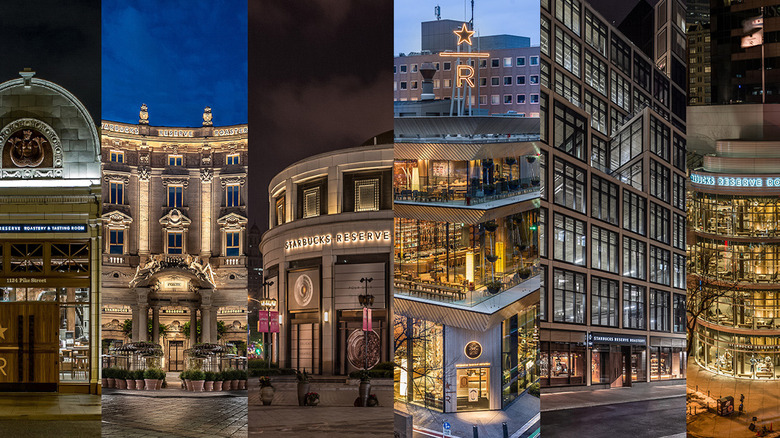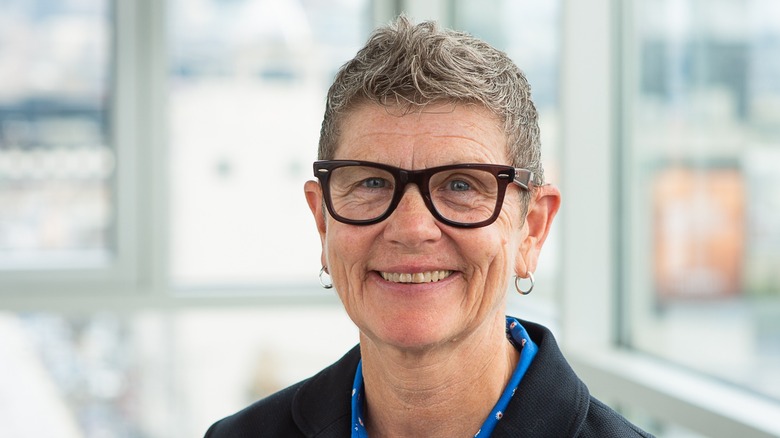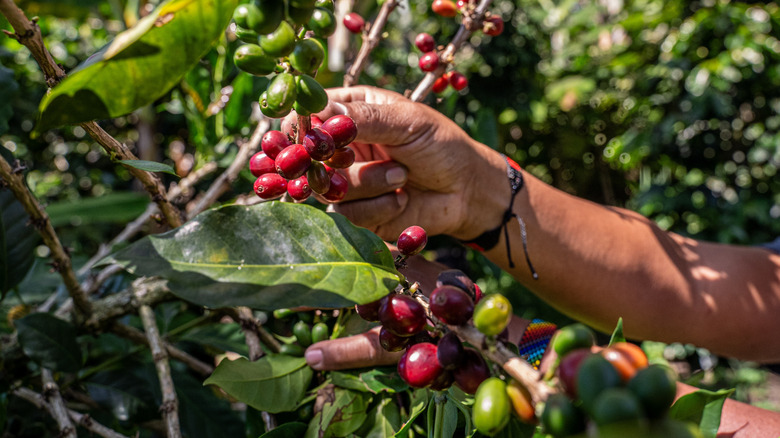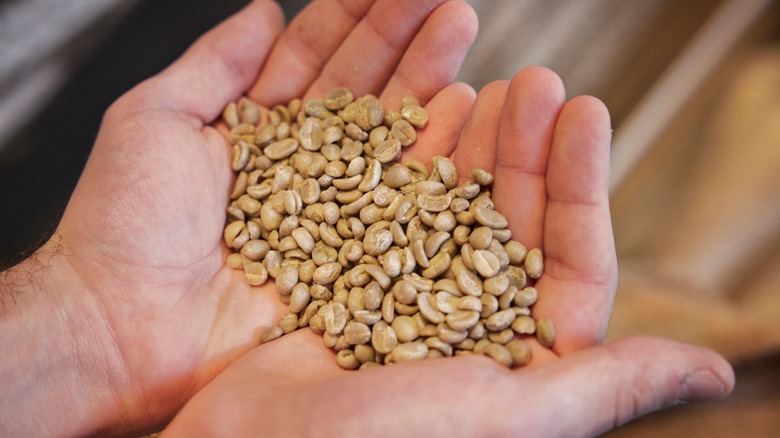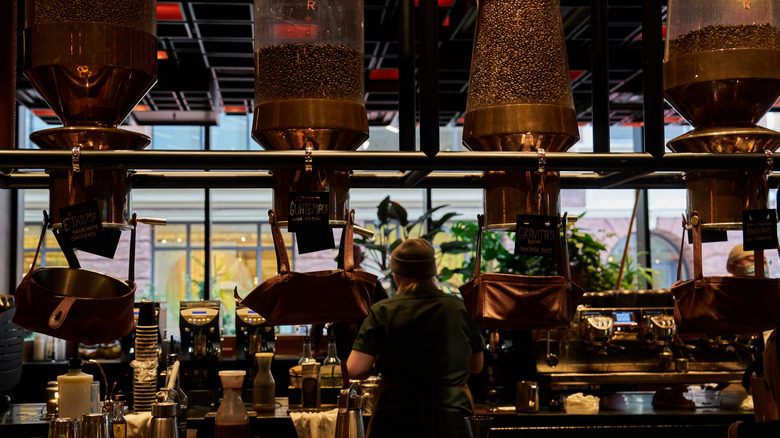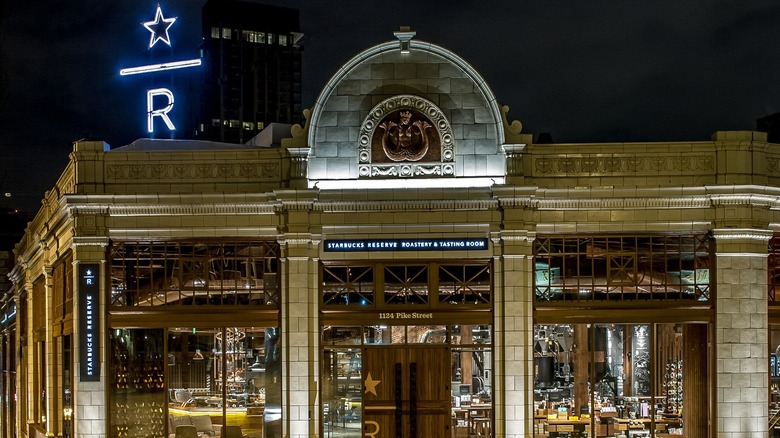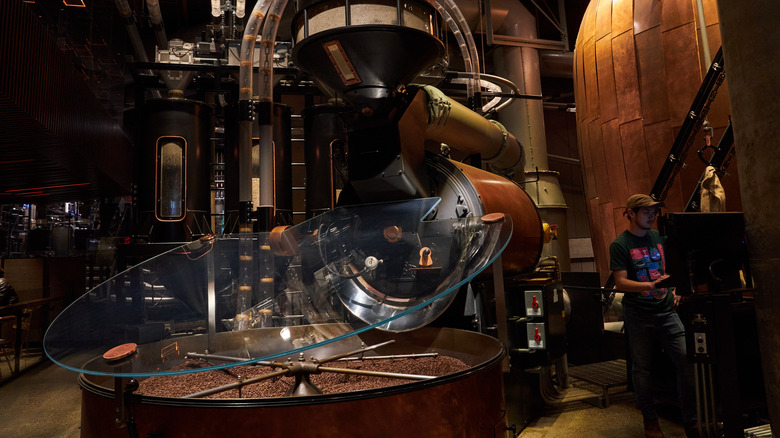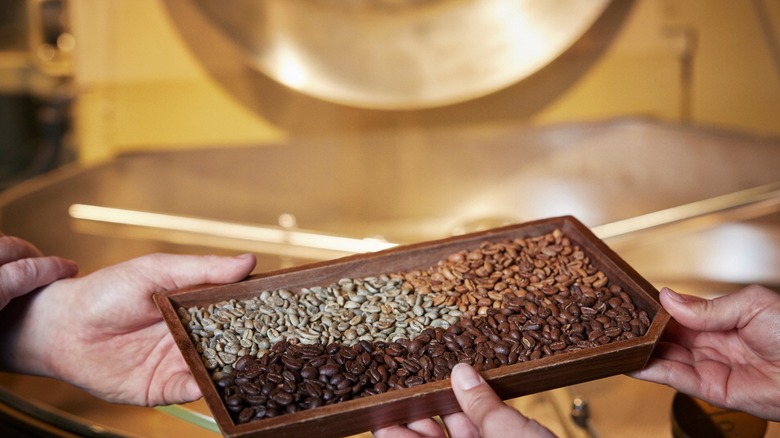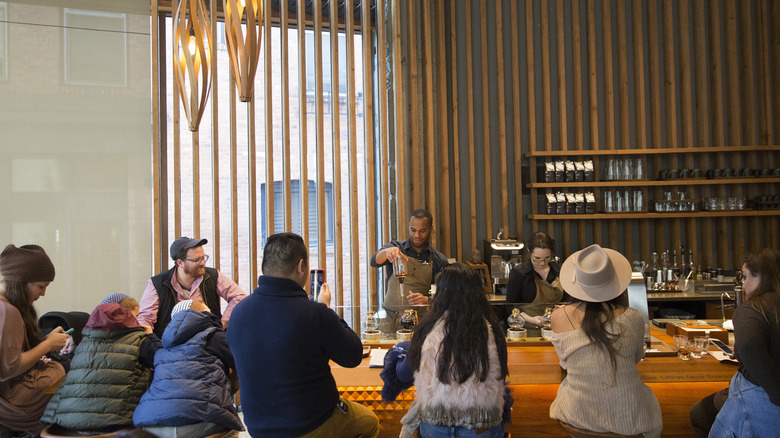The Absolute Best Job At Starbucks: What It's Like To Be An Elite Coffee Taster - Exclusive
Drinking coffee is different for everyone. But whether you like it hot or iced, espresso or drip, served black or doctored with cream and sweetener, the one thing we all want is for our coffee to taste good. Doubly so if we've spent extra money to have it made for us. At a chain like Starbucks, your local barista may be the final touchpoint before you take that first sip, but there are a lot of folks considering the taste of your coffee before it ever reaches the brew.
Recently, Tasting Table had the opportunity to sit down with Leslie Wolford, a coffee development lead at Starbucks. To celebrate the release of the Starbucks Reserve global Microblends coffee series, Wolford opened up about the decades she has spent as a partner with Starbucks. She also told us what it takes to be an elite taster maintaining coffee quality for a global company, along with pulling the curtain back on some of the processes involved in getting premium coffee to consumers. Anyone interested in uncovering more flavors from their daily cup will do well to hear Wolford's personal tasting tips.
It takes a lifetime of work
Take one look around a busy intersection in most major U.S. cities, and it's likely that somewhere on that block or the next is a Starbucks. The dominant proliferation of Starbucks across our physical, digital, and social landscapes can make it hard to remember that the company was once a young upstart, beckoning coffee-minded individuals to taste and work at its unique cafés. Leslie Wolford was one such person.
Before her current role as development lead (and elite taste tester), the Ohio native transplanted herself to Seattle. Wolford tells us that she arrived in the city in 1991, and at the time, "I had never heard of Starbucks ... I just fell in love with the vibe of the store." Fun fact: When Wolford started, Starbucks had 116 stores. Now, the company is projected to have 45,000 locations by 2025.
Wolford began working for the company and never stopped. Her first role was as a barista in the very first Starbucks location to include an espresso machine, and over her 32 years in the business, she has worked as a roaster and a green coffee loader as well. These two jobs primed her for her current role of developing the portfolio for Starbucks Reserve; as Wolford says, "I think part of the role I do today is my long history in coffee and quality."
You travel widely
Managing the quality of a single coffee roaster requires many moving parts. Being lead for the team whose responsibility it is to manage quality for 30-plus coffee blends and single-origins sold globally? More moving parts than you'll see on a highway. No surprise, then, that keeping it all together requires movement. Wolford is currently based in the Starbucks Support Center in Seattle. She tells us that throughout her career, she has had the privilege and luxury of traveling to more than 10 coffee origins across the globe. "It is really part of the role," she says, "to be immersed in coffee."
So, where does one go to dive in? Coffee is only grown in particular regions of the world. The geographic orientation is continuous; they're found between the Tropics of Cancer and Capricorn. That contributes to the collective grouping as the "Bean Belt."
Central and South America, Africa, the Middle East, and Southeast Asia are all general origin regions of coffee, and specific subregions exist. Local temperature, elevation, precipitation, and pest or disease presence each play a role in how a coffee crop grows. After that, processing takes place — another variable that can affect the final traits of a bean. Wolford's visits ensure the entire chain is meeting the quality and environmental grade set about by Starbucks. Throughout her experience, Wolford says her ethos for sourcing coffee has grown, and that's led to some interesting opportunities.
You get to work on some really cool projects
After you've taste-tested the amount of coffee that Leslie Wolford has, seeing the distinctions in how a bean was grown and processed becomes second nature. No doubt, Wolford has worked on her fair share of Starbucks projects highlighting how a specific coffee origin affects bean expression.
In January of 2022, however, Wolford and team began a new project for Starbucks Reserve Roasteries that would flip that typical angle on its head. Instead of spotlighting things like roasting techniques or bean processing, they were tasked with taking distinct coffees and blending them in a way that expressed the spirit of the city and Reserve locations where they were made ready for brewing. The Starbucks Reserve Microblend series is the end result of that undertaking.
There are only six cities with Starbucks Reserve Roasteries across the globe: New York, Chicago, Seattle, Shang-Hai, Milan, and Tokyo. Each microblend is exclusive to the roastery where it was crafted, making the release that much more distinctive and intriguing. The coffees within each blend are made of beans sourced from Latin America, Africa, Indonesia, and Asia Pacific.
Tastings affect cafés across the world
Wolford explains that her role with the Starbucks Reserve Microblends was to be responsible for creating the U.S.-based blends. Elite taster Sergio Alvarez ran point on the three international blends. For Alvarez, that means seeing the fruits of his labor on two different continents. The blends he worked on can be found in Milan, Tokyo, and Shang-Hai Starbucks Reserve stores.
As For Wolford, the microblend project sees coffee crafted by her tastebuds on the shelves of three American Reserve roasteries, each in a city that feels worlds apart from the next. It's far from the first time that coffee approved by Wolford has appeared nationwide, although she does tell us that collaborating on this series was a unique challenge that required intimate and challenging work with Starbucks partners (other employees) in each area.
Recently, Wolford visited each of the U.S. Reserve Roasteries — New York, Chicago, Seattle — and found the result of the microblends to be especially pleasing. "What I heard from the partners is, 'this [coffee] feels like my voice,'" she says. "That's a huge sense of pride and commitment to be able to help bring these coffees to life ... Sharing that love with those partners and having that reflected in their excitement."
Starbucks Reserve Roasteries offer a coffee playground
For those less experienced with tasting coffee, discerning a specific note in our morning cup can feel similar to the childhood discovery of a new favorite flavor. For someone like Wolford, who has spent three decades tasting coffee, uncovering new flavors requires a bigger playground (and a few more kids to play with). That's what Starbucks Reserve Roasteries offer. The difference between Starbucks cafés and Starbucks Reserve shops is that the latter locations most often deal in rarer beans from very small-scale farms, which can lead to a niche experience for consumers and employees alike.
In developing the microblend line for the U.S. Reserve Roasteries, Wolford teamed closely with a cross-functional group of baristas and roasters in each city. Platforming the theme of "coffee creativity and the center of coffee," the partners then dove into the individual hearts of each destination.
For the Emerald City of Seattle, Wolford played with coffees that could speak to both the outdoor adventurousness of such a verdant place while also calling back to Seattle's coffee heritage. In New York, the ethos was around global connectivity and a ferocious dedication to the "tapestry of diverse cultures and neighborhoods." As for Chicago, Wolford says the city's flavor was expressed as a "playground of being curious about coffee," where encouragement to "dream bigger and adventure more" is abundant.
Making coffee becomes a scientific job
These days, it's commonplace for both java snobs and earnest enthusiasts to put a special focus on single-origin or micro-lot coffee bean labels. These types of coffee beans certainly have their virtues in regard to flavor, environmental, and economic impact. Those strengths also don't detract from the beauty of blended coffees, nor from the process of crafting them, which is really a science.
Wolford says that when making the Roastery-inspired microblend line, she and the team used a process of dual dry and wet blending in order to study and invite out the characteristics they wanted to see in each blend. It requires tasting each bean after it is roasted separately and served solo. Wet blending, as Wolford describes, involves taking these individually roasted and brewed beans and mixing the liquid forms in measured percentages. The goal? "To introduce what we think the overall blend will taste like at a very small scale," says Wolford. "It's just it's just a peek, a snapshot in time."
If the image of a coffee roaster in a lab coat and goggles appeared in your mind, same. The process of blending, especially for coffee lines larger than the microblend series, requires careful measurement of many variables. The time that coffee beans are roasted and at what temperature — even the way a roaster tracks their metrics is a variable that could affect the end product. Needless to say, mixing a microblend requires data-oriented results, much like science.
You can see individual coffee beans as the ingredients they are
Being an elite taster with the job of ensuring quality across a multinational company obviously requires technical skills. Consistency is essential for a brand this big. Still, while talking with us, Wolford makes clear that developing the best coffee — particularly, a line of coffee beans that taste like three of America's greatest cities feel — is about more than numbers.
For the exclusive line of Starbucks Reserve Microblends, which involved harvests from four different coffee regions, Wolford and team looked at each individual bean as if it was the ingredient to a spectacular dish. "We start to think about how those pieces work together," she says, "Much like what I think a chef would do when they're designing a new recipe."
Wolford has to use her experience as a coffee world traveler to creatively consider how beans with different origins might fit, or not fit, in a particular blend. Her process many home cooks can relate to. "So, you can open your pantry — just like when you cook — open your pantry and look at all the elements you want to work with," she says. "And then how do you bring those to life? Whether it's by baking, or it's by grilling, or all the different elements that bring and introduce flavor is really how we started with that."
You develop elite tasting tips for coffee cuppings
With over three decades of coffee-tasting experience in her career, it's safe to assume that Leslie Wolford can tell you a thing or two about how to get familiar with the nuances of your daily cup. After all, she sometimes tastes 600 cups of coffee in a single day. Someone with that level of caffeine intake might be expected to unleash a surge of suggestions for improving your tasting skills, but Wolford, in her calm demeanor, offers one primary tip: "I always say, 'taste with others.'"
"We all taste things differently," she continues. "We can agree to disagree. We can align on flavors, and we can start to have a dialogue about the things you enjoy." Wolford's tip should be taken as more than just sound advice; coffee has thousands of chemical compounds that impact flavor and aroma, yet science has linked the way we experience flavor to our individual genetics. So, tasting with others can help us expand our perception of the coffee in front of us.
Another tip, albeit one that Wolford didn't explicitly share, is the technique of slurping coffee to aerate and spread it across your nose and tastebuds. Doing so allows you to flush your senses and capture more of the coffee essence. How do we know this technique is elite taster-approved? Starbucks's Employee Archive page mentions that Wolford has a signature slurp, which sounds similar to a loud bird's chirp.
